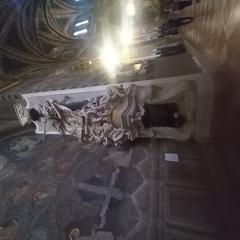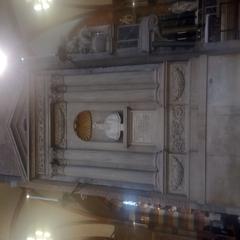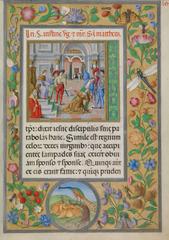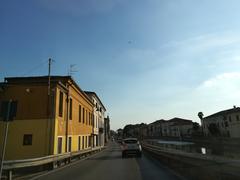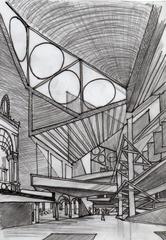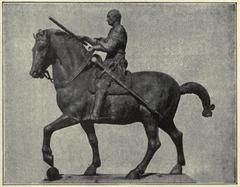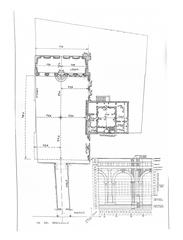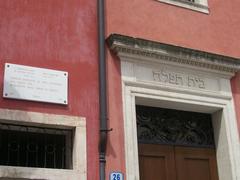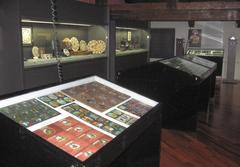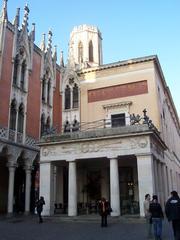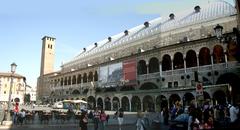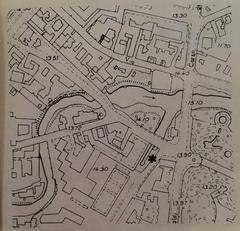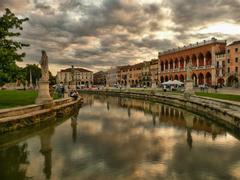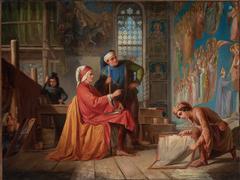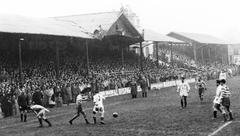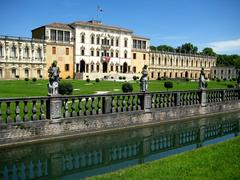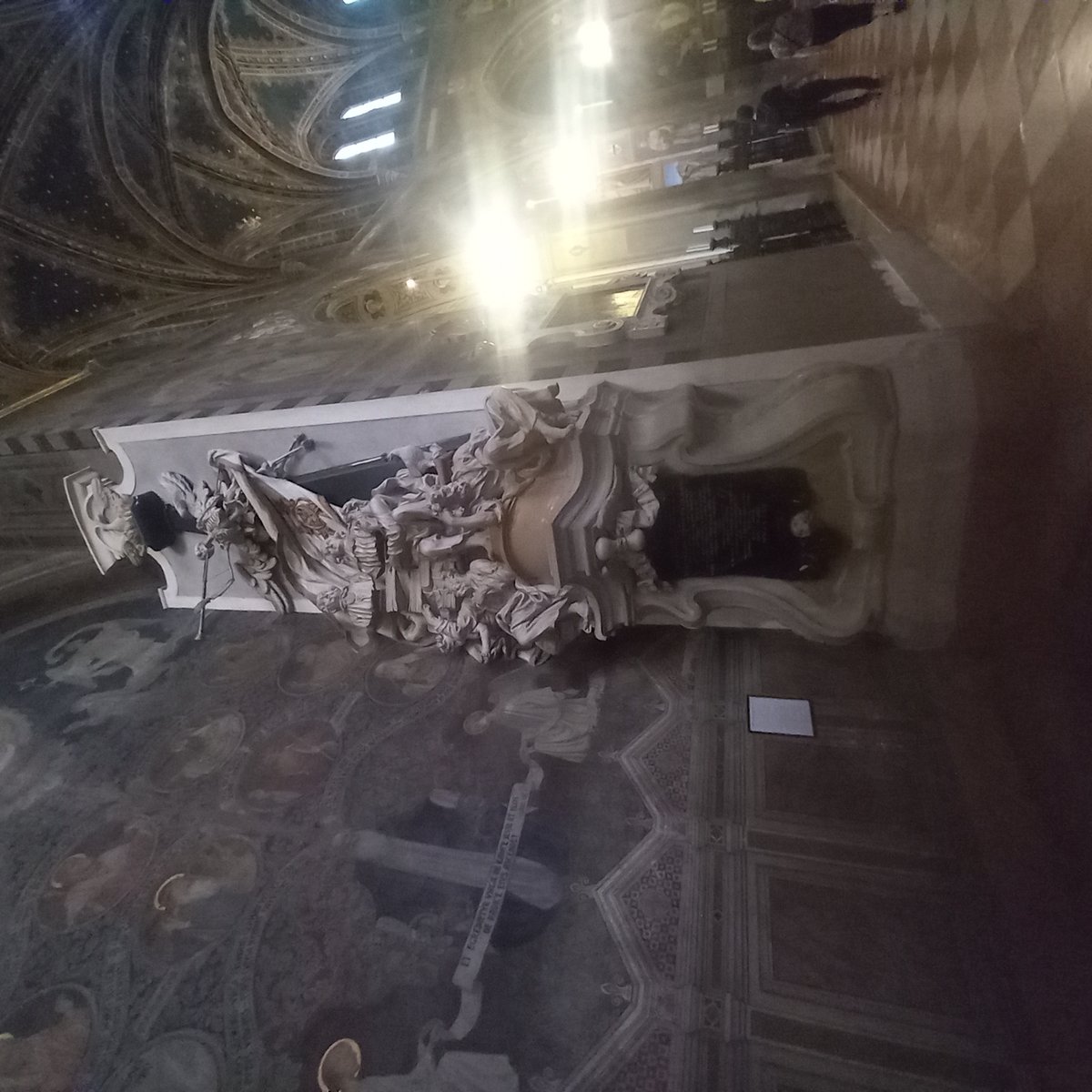
Basilica of Saint Anthony of Padua: Complete Guide to Visiting Hours, Tickets, and History
Date: 14/06/2025
Introduction
The Basilica of Saint Anthony of Padua, known locally as “Il Santo,” is a jewel of religious architecture and a major pilgrimage site in Italy. Built in the 13th century to enshrine the remains of Saint Anthony—a beloved Franciscan preacher and miracle worker—the basilica stands as a testament to centuries of faith, artistry, and cultural exchange. Each year, it welcomes millions of pilgrims and visitors drawn by its sacred relics, awe-inspiring architecture, and renowned artworks by masters like Donatello and Giotto. This guide provides everything you need to plan your visit, including history, cultural highlights, practical information on tickets and hours, accessibility, and insider tips for exploring Padua’s rich heritage (Santantonio.org; Italyscapes).
Table of Contents
- Origins and Historical Development
- Architectural Features and Innovations
- Artistic Masterpieces and Chapels
- Religious and Cultural Significance
- Visiting Information (Hours, Tickets, Accessibility)
- Guided & Virtual Tours
- Photography and Visitor Etiquette
- Nearby Attractions in Padua
- Special Events: Antonio800 Jubilee 2025
- Preservation and Community Initiatives
- Frequently Asked Questions (FAQ)
- Final Tips and Resources
Origins and Historical Development
Construction of the basilica began in 1232, just one year after the death of Saint Anthony, whose widespread veneration led to his canonization in record time. The basilica quickly became a magnet for pilgrims across Europe, eager to honor the saint and seek his intercession. Its unique architectural evolution—melding Romanesque, Gothic, and Byzantine influences—reflects the dynamic spirit of medieval Padua, then a crossroads of religious and cultural exchange (Santantonio.org; Wikipedia).
Saint Anthony’s legacy as a preacher, teacher, and champion of the poor endures in the basilica’s continuing social, educational, and spiritual outreach. Major feast days, especially June 13th, see grand processions and gatherings of the faithful (Catholic Shrine Basilica).
Architectural Features and Innovations
The basilica’s architecture is a tapestry of styles:
- Romanesque: Seen in the lower façade and sturdy piers.
- Gothic: Pointed arches, ribbed vaults, and soaring vertical spaces.
- Byzantine: Eight domes and slender bell towers reminiscent of St. Mark’s Basilica in Venice.
- Islamic influence: Evident in the onion-shaped domes (Holzer ETHZ).
The interior is laid out in a Latin cross, with a vast nave, double aisles, a transept, and radiating chapels. Natural light filters through stained glass, illuminating the marble floors and frescoed vaults. The basilica’s innovative use of space, light, and color creates an atmosphere of both grandeur and intimacy (Sant’Antonio Virtual Tour).
Artistic Masterpieces and Chapels
Donatello’s Gattamelata
In the piazza outside stands Donatello’s 15th-century bronze equestrian statue of Gattamelata—the first such monument since antiquity and a milestone of Renaissance art (The Travel Folk).
Chapel of Saint Anthony
A Renaissance masterpiece begun in 1500, it is the focal point for pilgrims, with the saint’s tomb at its heart. Marble reliefs and sculptures adorn the space, inviting contemplation (Sant’Antonio Virtual Tour).
Chapel of the Black Madonna
The oldest surviving structure of the original church, it houses a venerated icon of the Black Madonna and offers a serene refuge for prayer (Sant’Antonio Virtual Tour).
Chapel of Blessed Luke Belludi
Dedicated to Saint Anthony’s close disciple, this chapel is celebrated for its devotional frescoes and spiritual ambiance.
Chapel of the Relics (Treasury Chapel)
A Baroque masterpiece by Filippo Parodi, here you’ll find Saint Anthony’s tongue, jaw, and vocal cords in ornate reliquaries, along with other precious artifacts (Sant’Antonio Virtual Tour).
High Altar and Presbytery
Donatello’s bronze reliefs and sculptures, completed in the mid-15th century, depict scenes from the lives of Christ and the saints. His bronze Crucifix is a highlight, complemented by later works by Tiziano Aspetti and others (Sant’Antonio Presbytery and Main Altar).
Choir and Frescoes
The 18th-century choir, designed by G. Massari, and frescoes by Altichiero da Zevio and others, underscore the basilica’s status as a living museum of sacred art (Sant’Antonio Presbytery and Main Altar).
Religious and Cultural Significance
The basilica is not Padua’s cathedral but remains its spiritual heart. Saint Anthony is honored as the patron of lost things, the poor, travelers, pregnant women, and the oppressed. Pilgrims leave prayers at his tomb, witness miracles, and participate in vibrant annual rituals, including the grand procession on June 13th (Italyscapes; Padova.com).
The basilica is a global center of Franciscan spirituality and is one of just eight international shrines recognized by the Vatican. Its Franciscan friars continue to serve the community through liturgies, confessions, education, and charitable works (Santantonio.org).
Visiting Information
Opening Hours
- Daily: 6:15 or 6:30 AM – 7:00 PM (hours may be extended during major festivals)
- Closed: Christmas Day and New Year’s Day
- Masses: Multiple daily services; check the official schedule for details (Sant’Antonio Official Site)
Tickets and Entry
- Basilica Entry: Free of charge; donations are welcome.
- Museum Ticket: €2.50 for combined entry to the Anthonian Museum, Oratory of St. George, and the Little School.
- Audioguide Rental: €3, available at the Information Office.
Tickets for the museums and audio guides are purchased on-site; advance booking is generally not required. Guided tours can be arranged through the official website or local operators.
Accessibility
The basilica is largely wheelchair accessible, with ramps and assistance available upon request. Some areas may have steps or uneven floors; contact staff in advance for personalized support (Sant’Antonio Official Site).
Guided & Virtual Tours
Expert-led guided tours are available in multiple languages, offering deeper insights into the basilica’s history and art. Virtual tours and multimedia guides are also available for remote visitors or those seeking a preview (Sant’Antonio Virtual Tour).
Photography and Visitor Etiquette
- Photography: Allowed in most public areas, but flash and tripods are prohibited; photography is restricted near relics and during services.
- Dress Code: Shoulders and knees must be covered; hats should be removed inside.
- Behavior: Maintain silence and respect, especially during liturgies and near the tomb of the saint (Sacred Wanderings).
Nearby Attractions in Padua
Maximize your visit by exploring these nearby sites:
- Scrovegni Chapel: Giotto’s fresco masterpiece—advance booking recommended.
- Prato della Valle: One of Europe’s largest squares, with statues and gardens.
- University of Padua: Founded in 1222, one of the world’s oldest universities.
- Orto Botanico: The oldest university botanical garden in the world (Jubilee ItaloTreno).
Special Events: Antonio800 Jubilee 2025
In 2025, Padua will celebrate the Antonio800 Jubilee, marking 800 years since Saint Anthony’s arrival in Italy. Festivities include processions, concerts, exhibitions, and the “En Route with Saint Anthony” pilgrimage. Check the basilica’s website for the event calendar (Santantonio.org).
Preservation and Community Initiatives
Ongoing restoration projects protect the basilica’s art and architecture for future generations. The Franciscan friars oversee education, outreach, and social services that keep Saint Anthony’s legacy alive (Santantonio.org).
Frequently Asked Questions (FAQ)
Q: What are the Basilica of Saint Anthony of Padua visiting hours?
A: Open daily from 6:15/6:30 AM to 7:00 PM. Closed only on Christmas Day and New Year’s Day.
Q: Is there an entrance fee?
A: Entry to the basilica is free. Museum access requires a €2.50 ticket.
Q: Are guided tours available?
A: Yes, official guided and virtual tours are available in several languages.
Q: Is the basilica wheelchair accessible?
A: Mostly, with some areas requiring assistance. Contact staff for support.
Q: Can I take photographs inside?
A: Photography is permitted in most areas, except near relics and during services; no flash or tripods.
Q: How do I get there?
A: The basilica is centrally located in Padua. It’s a 20-minute walk from the train station, with ample public transport options (Sacred Wanderings).
Q: Are there special events or feast days?
A: Yes, the basilica holds major events, especially the June 13th feast and the Antonio800 Jubilee in 2025.
Final Tips and Resources
- Best Times to Visit: Spring (April–May) and fall (September–October) for pleasant weather and lighter crowds.
- Visitor Services: Seasonal tourist information is available in Piazza del Santo; main office in city center (Turismo Padova).
- Dining: Enjoy Padua’s local cuisine at nearby cafes.
- Dress and Behavior: Modesty and respect are essential in this sacred space.
For enhanced experiences, download the Audiala app for audio guides and up-to-date visitor information, and follow official social channels for news and tips (Audiala App).
Contact Information
- Address: Piazza del Santo, 11, 35123 Padua, Italy
- Tourist Info: +39 049 5207415 | [email protected] (Turismo Padova)
- Official Website: www.santantonio.org
Sources and Further Reading
- Santantonio.org
- Italyscapes
- Santantonio.org Virtual Tour
- Sacred Wanderings
- Santantonio.org Visiting Hours
- Padova.com
- Turismo Padova
- Italys Dream Tourism
- The Travel Folk
- Jubilee ItaloTreno
- Audiala App
